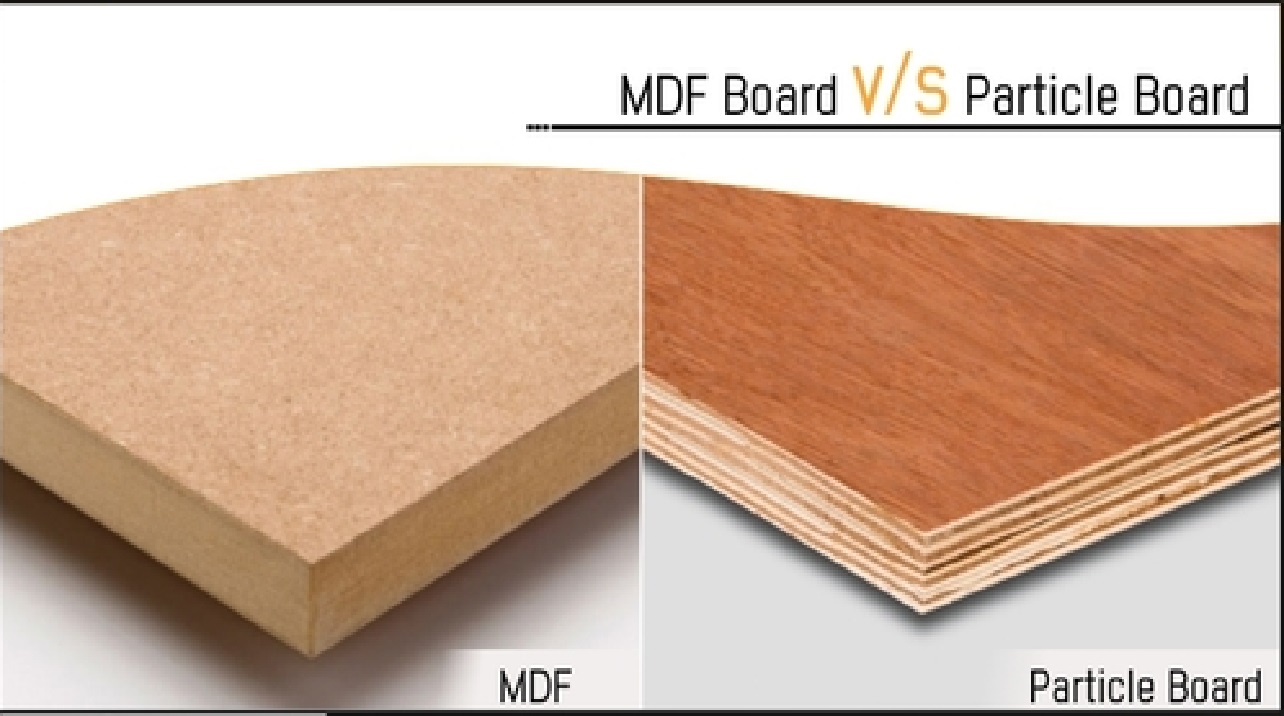Although solid wood highlights several good points which make it an ideal material for finishing, there is one thing that could probably stop you from using it – the cost. The durability of woods is something you cannot question. However, it can be very expensive if you will try to outfit the whole area with some wood office furniture.
Considering this fact, manufacturers of furniture often cut the overall cost by utilizing particle board and MDF in constructing underlayers draws as well as paneling parts that are not always visible. Moreover, you can use these materials to form an item of entirely new furniture – making them a great alternative that is worth trying. But when assessing particle board vs MDF, which is better?
Comparing Particle Board vs MDF

Let us see the features of particle board vs MDF:
Composition
You can easily determine the distinction in composition between particle board and MDF by checking the smoothness or roughness of the material.
Specifically, MDF possesses a smooth composition since it is comprised of tiny wood fibers. Particle board, on the other hand, is made from bigger and rougher wood chips and shavings. This is why you’d notice them have rough surfaces.
Nevertheless, both particle board and MDF feature the same compositions in such a way that they are made from a chunk of lumbers – making them environmental-friendly. However, you’ll just have to consider the fact that the binders and glues of particle board and MDF commonly have formaldehyde which is gradually exuded from the panel through a gas.
Strength
When assessing their strength, particle board and MDF shelves are not good for hanging, unless you install some reinforcement. You might find them flat and powerful, however, they are not solid.
Use
MDF is the ideal choice if you are looking for affordable plywood that you can use in creating wood projects such as cabinetry, furniture, speaker boxes, and flooring. MDF is known for its consistency, machinability, smooth finish, and strength. Moreover, this material is adaptable when creating patterns.
On the other hand, a particle board is mainly used for countertop substrate, underlayment, and furniture. Nevertheless, this material exhibits another property that makes it incredible. These are the soundproof and thermal properties.
Durability
Durability is one thing people will normally check before buying material. Now, if you are one of these people who value durability, then you might want to check for other options other than particle board and MDF. Particle board does not warp or bow, however, it can likely be unstable and swell if there is exposure to water.
Wet conditions or humidity can weaken particle board and MDF. Thus, giving them less durability. This happens because fibers in the composite wood scraps absorb water and enlarge similar to a sponge. Nonetheless, the material never shrinks back even if it dries out. Rather, you will notice that little cracks are forming which weaken the material.
Weight
Projects that are built from a particle board and MDF are likely to take a lot of weight. Particle board commonly weighs around 85 pounds. The significant weight could imply that joining moveable furniture will require great power. Nevertheless, considering the good conditions, particle boards are quite light compared to MDF.
Projects made from particle boards from easier to move around compared to those that are built from MDF.
Screw and Nail Holding Capacity
Particle board exhibits the highest capacity for holding screws and nails. On the other hand, MDF does not easily hold screws and nails. While nailing, you will see that the fraction is visible around it. You can inhibit this issue by using pilot holes when screwing MDF.
Environmental-Friendliness
Both particle board and MDF have pros and cons when checking their environmental-friendliness. They are made from wood scraps. They undergo a recycling method that devotes to saving trees. It shows friendliness to the ecosystem.
However, the disadvantage is that dust and formaldehyde are essential concerns when using composite materials. Formaldehyde is utilized in binders and glues of composite material and takes in the form of gas while it is exuded from the whole panel.
Conclusion
Now, if you will be asked – which is better between particle board vs MDF, then the answer would somehow depend on various aspects. At the end of the day, you will have to assess which aspect weighs more for you.
It will be discerned with your desired use. Considering the positive and negative things about particle board and MDF, you might want to give more favor to the particle board. Although as discussed, composite materials have their advantages and uses. If you think that these things are favorable for you, then going for them would be best. Decide while considering the long-term effect and assess the advantages and disadvantages of the two materials.


Leave a Reply